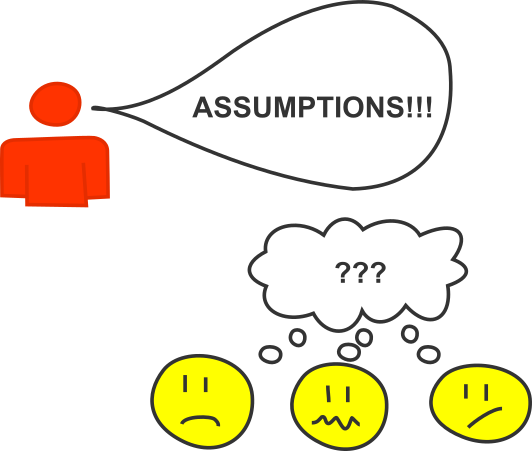
If you start working as a software developer today you don’t automatically turn into an odd, unintelligible creature. In fact, you’ll probably find your ideas get valued by professionals in other areas - anyone who creates for a living is bound to come across methods or tools first thought out by software developers. In the past you’d risk being caricatured as someone with excellent technical skills, but nearly no verbal ability. While individual verbal ability might not be a problem anymore, your increasingly distributed team comes with its brand new set of communication issues. Team members from diverse backgrounds are bound to have different ways to reason and different verbal styles. This is why now is a great time to replenish your team’s toolbox with anything that helps bust those barriers. We depend upon each other to do our best work, but if we can’t understand each other clearly there’s no way we’ll get it done.
Take a leap of faith, set your smartphone timer and invest 5 minutes on communicating with your team. You won’t have much to lose if it goes wrong, but your team could hugely benefit from this if everything goes right. Here are some things you can try with your team in just 5 minutes:
Clarify the team’s goal and priorities to prevent bad surprises: If everyone has an opportunity to talk about how they see a shared goal, it becomes easier to understand which areas each team member tends to prioritize. Since the way we prioritize often reflects what we value, we’re more likely to engage in producing results we can be proud of when given a chance to concentrate on our priorities. Get to know your team members’ priorities and you’ll be able to delegate tasks more efficiently. Remember bigger pictures are made up of the small puzzle pieces each person works on. You want to help your team members focus on what they can do best to ensure the team gets a good final result.

Talk positive: Make an effort to remind team members that what they’re doing matters. You’ll likely get the same in return, and in the process you’ll unblock communication channels and let feedback through. Feedback is crucial - give it out often and early and ask for the same in return. Having team members silently mull over their own ideas means having a frustrated team. Frustrated people end up falling back on assumptions, and assumptions hurt collaboration. You’re right to assume water freezes at 0ºC/ 32ºF, but you can’t be right on everything all the time. Someone else in your team may be able to help you figure things out, but that’s not possible without making an effort to keep everyone on the same page.

Stay away from unproductive territory: Cultivating focus is the way to help your team solve problems, but are you doing it right? Maybe you already start with the tasks you find more intimidating so things become easier as you go on. But if you want to get the team to help you in return, you should give them enough space to cultivate their own focus. Asking everyone to read through lanky text explanations before a scrum meeting defeats the purpose of a scrum meeting. Bypass purely text-based communication and try sketching your tasks. It can be faster to read and understand a good sketch or diagram than a text-based explanation. Making your sketching collaborative can open even more doors.

If you found these tips valuable, please let us to indulge in a little self-promotion. Our team lives by these strategies. Sketchboard is developed in Finland, where even the prime-minister was recently quoted as saying that “anything you can’t draw on a flipchart can’t work”. Politics aside, we want to help you bust barriers. Start exploring now to learn how your team can create collaborative sketches and diagrams, send and receive feedback in real-time. It takes less than 5 minutes to get started. Give it a try and tell us how it goes!

